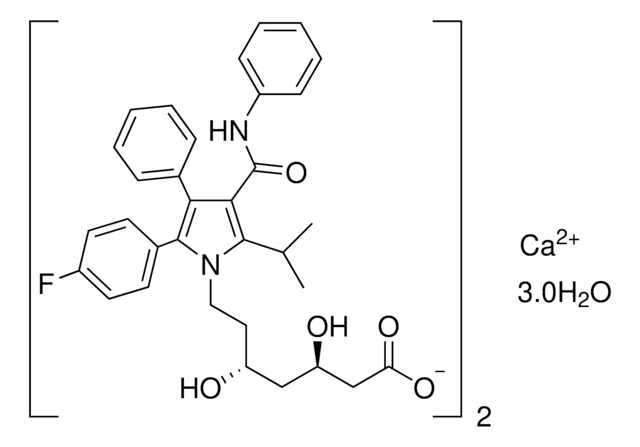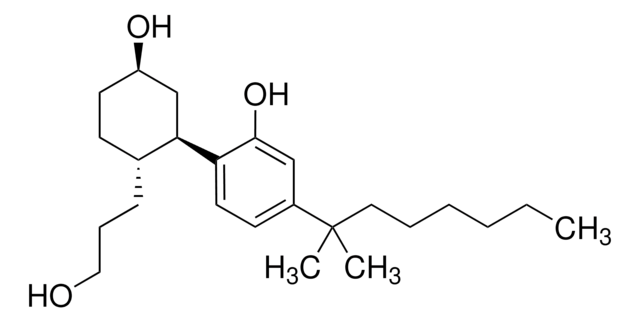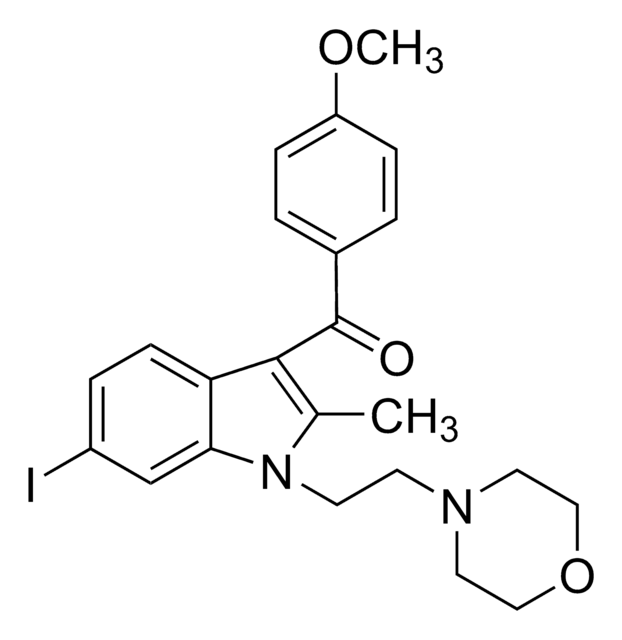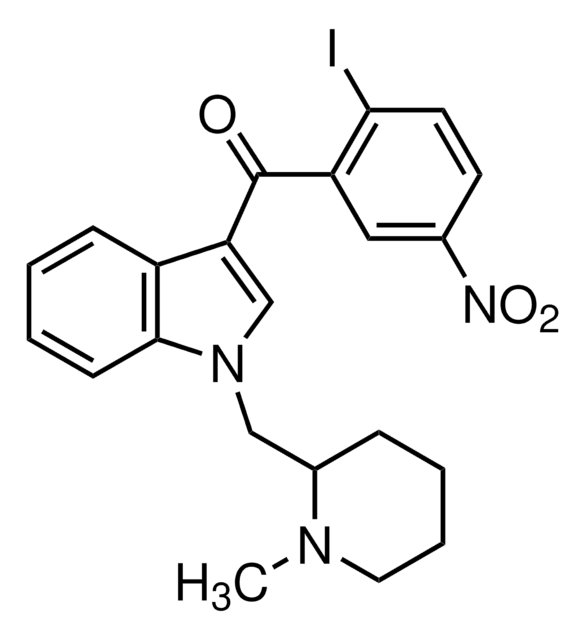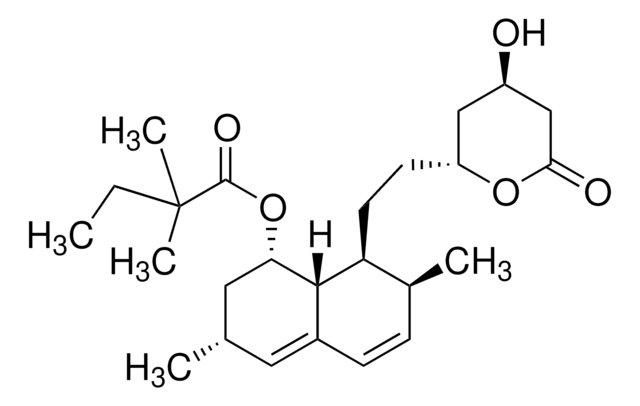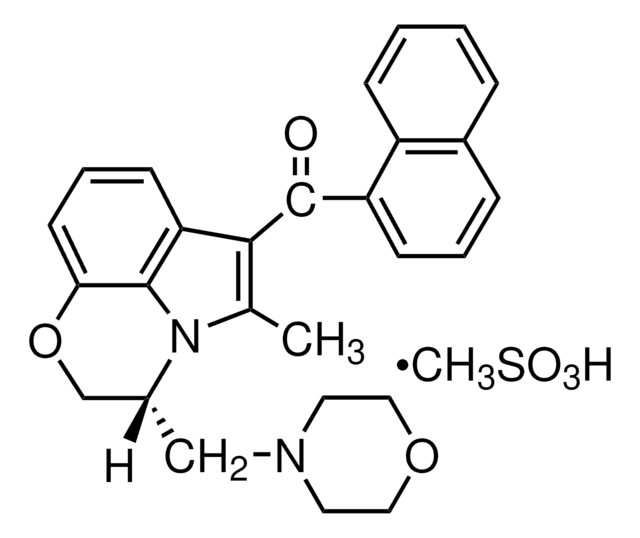PZ0019
CP-945,598
≥98% (HPLC)
别名:
1-[8-(2-Chlorophenyl)-9-(4-chlorophenyl)-9H-purin-6-yl]-4-(ethylamino)-4-piperidinecarboxamide hydrochloride, 1-[9-(4-Chlorophenyl)-8-(2-chlorophenyl)-9H-purin-6-yl]-4-ethylaminopiperidine-4-carboxylic acid amide hydrochloride, CP 945598-01, Otenabant hydrochloride
登录查看公司和协议定价
所有图片(1)
About This Item
推荐产品
品質等級
化驗
≥98% (HPLC)
形狀
powder
顏色
white to beige
溶解度
DMSO: 1 mg/mL, clear (warmed)
儲存溫度
room temp
InChI
1S/C25H25Cl2N7O.ClH/c1-2-31-25(24(28)35)11-13-33(14-12-25)22-20-23(30-15-29-22)34(17-9-7-16(26)8-10-17)21(32-20)18-5-3-4-6-19(18)27;/h3-10,15,31H,2,11-14H2,1H3,(H2,28,35);1H
InChI 密鑰
KPYUQCJBZGQHPL-UHFFFAOYSA-N
生化/生理作用
CP-945,598 is a potent, selective, high affinity and competitive cannabinoid type 1 (CB1) receptor antagonist. CP-945,598 inhibits both basal and cannabinoid agonist-mediated CB1 receptor signaling in vitro and in vivo. CP-945,598 exhibits anorectic activity in two models of acute food intake in rodents, fast-induced re-feeding and spontaneous, nocturnal feeding.
CP-945,598 is also known as 1-(8-(2-Chlorophenyl)-9-(4-chlorophenyl)-9H-purin-6-yl)-4-(ethylamino)piperidine-4-carboxamide. This orally active antagonist of the cannabinoid CB-1 receptor may be used in the treatment of obesity.
特點和優勢
This compound is a featured product for Neuroscience research. Click here to discover more featured Neuroscience products. Learn more about bioactive small molecules for other areas of research at sigma.com/discover-bsm.
儲存類別代碼
11 - Combustible Solids
水污染物質分類(WGK)
WGK 3
閃點(°F)
Not applicable
閃點(°C)
Not applicable
Excretion, metabolism, and pharmacokinetics of CP-945,598, a selective cannabinoid receptor antagonist, in rats, mice, and dogs
Miao ZS, et al.
Drug Metabolism and Disposition, 39(12), 2191-2208 (2011)
Lei Xiao et al.
eLife, 7 (2018-04-21)
The experience of rewarding or aversive stimuli is encoded by distinct afferents to dopamine (DA) neurons of the ventral tegmental area (VTA). Several neuromodulatory systems including oxytocin regulate DA neuron excitability and synaptic transmission that process socially meaningful stimuli. We
我们的科学家团队拥有各种研究领域经验,包括生命科学、材料科学、化学合成、色谱、分析及许多其他领域.
联系技术服务部门
